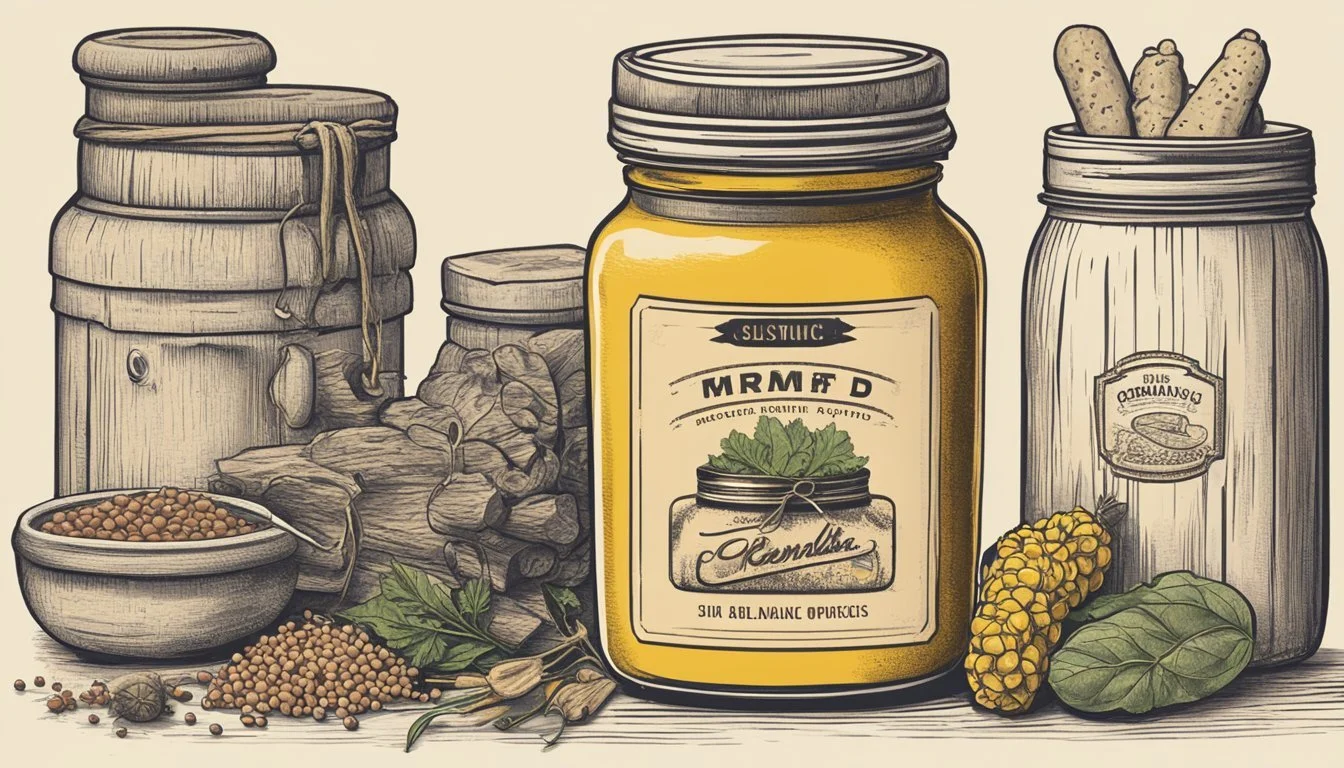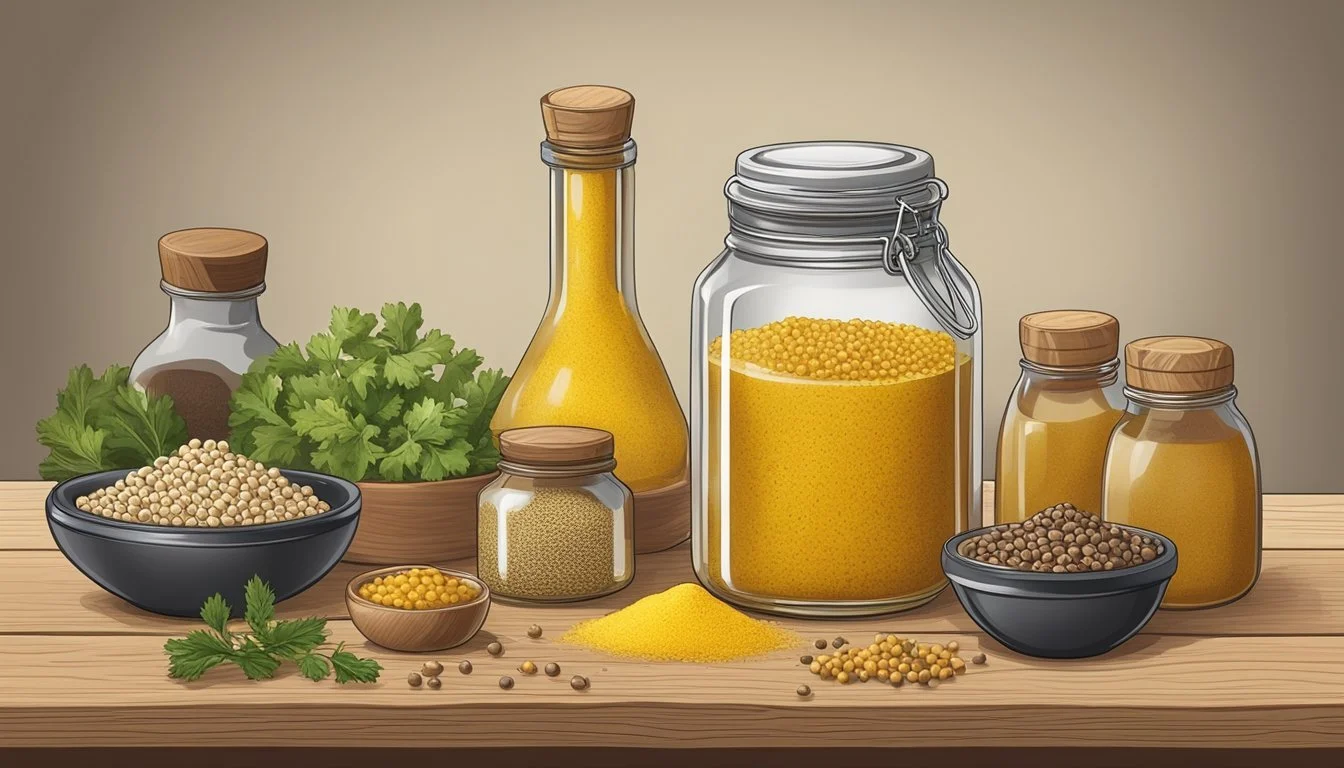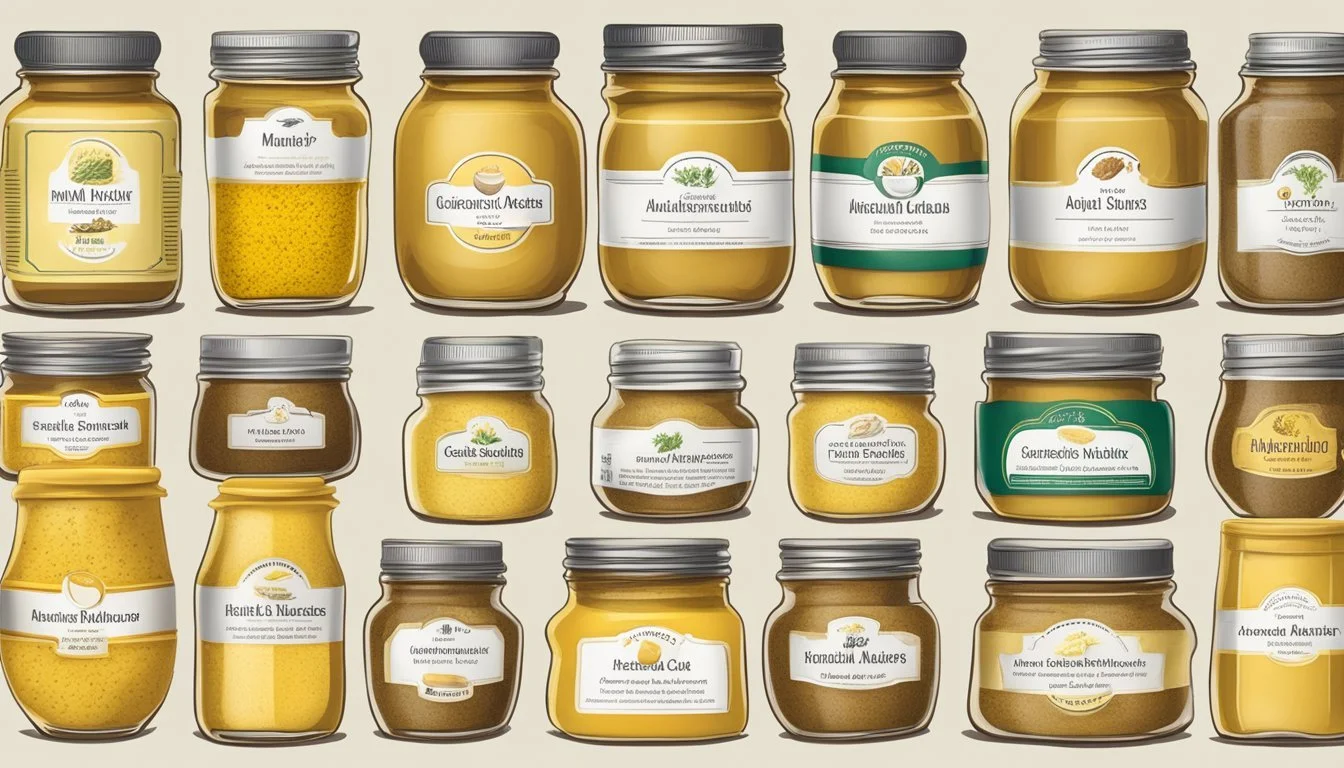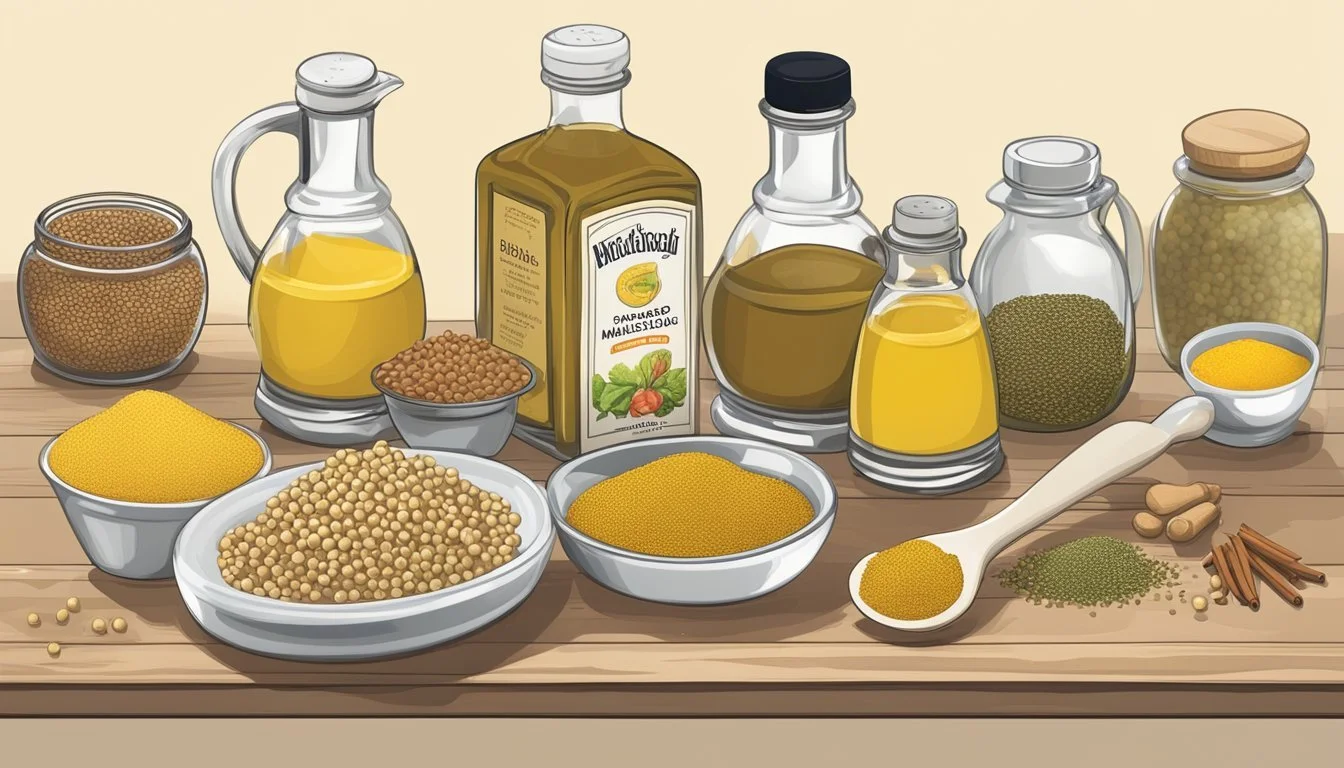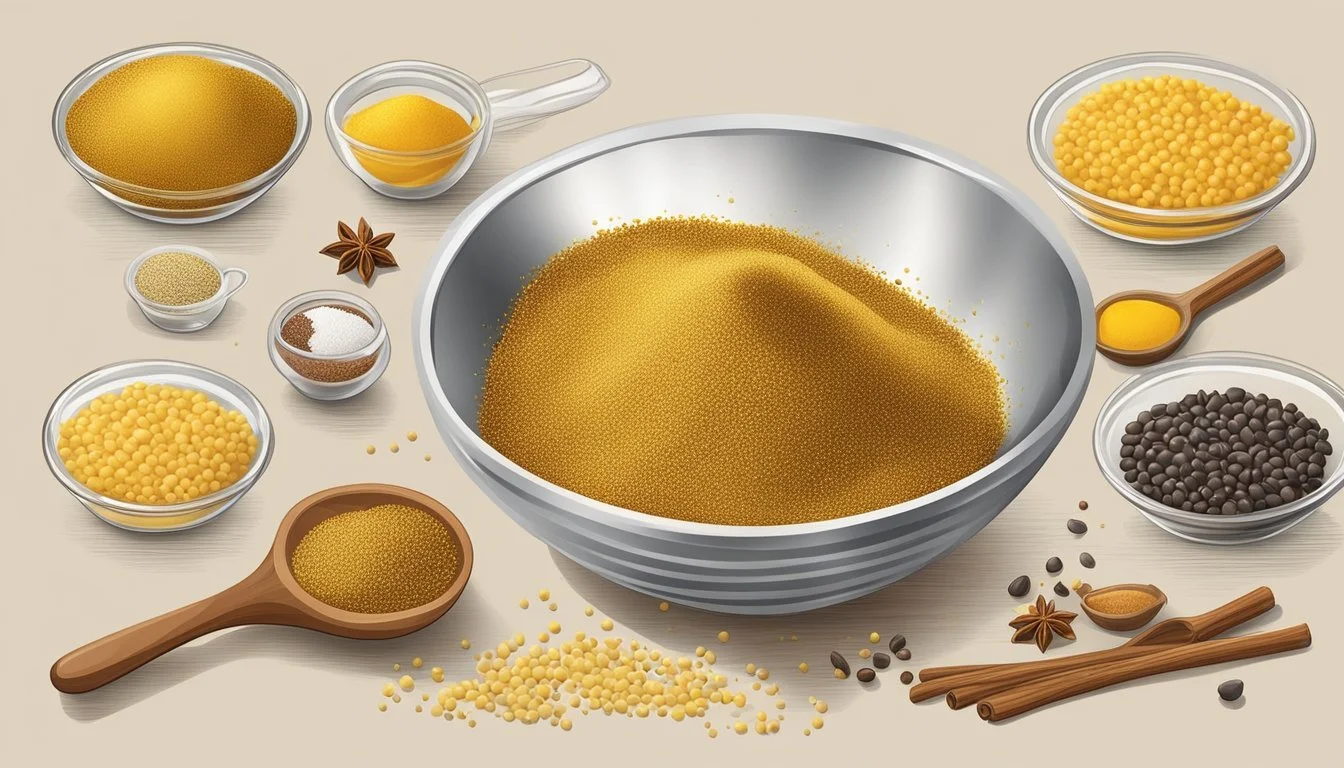German Mustard Substitutes
Ideal Alternatives for Traditional Flavors
German mustard is renowned for its rich flavor and distinct tang, a staple in traditional German cuisine. It's a key ingredient in dishes such as sausages, dressings, and marinades. Its unique taste comes from a combination of mustard seeds, vinegar, spices, and sometimes sweeteners. However, if one finds themselves without German mustard or simply wishes to experiment with other flavors, there are several substitutes that can be used to achieve a comparable taste profile.
Some of the most effective substitutes for German mustard include honey mustard for a sweeter tone, and spicy brown mustard for a bit of heat. Stone ground mustard is an excellent alternative as well, as it offers a similar texture with a slightly different spice blend. Whole grain mustard, with its visible mustard seeds, provides a rustic appearance and a burst of flavor that can mimic the heartiness of German mustard in recipes. Each alternative offers a different nuance to dishes, allowing for customization according to personal preference and the specific requirements of the recipe at hand.
In cases where the texture is more important than the exact flavor, or when a mild flavor is preferred, mayonnaise can serve as an unusual but effective substitute. It mimics the creaminess of German mustard without the sharpness, making it suitable for those with milder palates. For recipes that call for the acidity and vinegary kick of German mustard, white vinegar can be used cautiously as a stand-in, rounding out the flavors of the dish. When selecting a substitute, it's important to consider the desired outcome in terms of taste, texture, and appearance to ensure the best possible result.
Understanding German Mustard
German mustard is an essential condiment in German cuisine, known for its robust flavor and variety. This section explores its historical significance, distinctive features, and the popular varieties that shape the culinary landscape of Germany.
Historical Use of Mustard in German Cuisine
Mustard has been a staple in German food culture for centuries, with its use dating back to medieval times. It has traditionally been used as a flavor enhancer for meats and sausages, contributing to the distinct taste of German dishes. Mustard's role in German cuisine extends beyond the palatable, serving also as a preservation method for meats before modern refrigeration.
Distinctive Features of German Mustard
German mustard is characterized by its unique combination of mustard seeds, vinegar, and a blend of spices that may include turmeric and paprika. The flavor profile ranges from sweet and mild to sharp and spicy, such as seen in spicy brown mustard. A significant feature of German mustard is its texture, which can be smooth and creamy or coarse and grainy, as is the case with whole grain mustard.
Popular Varieties of German Mustard
German mustard comes in several varieties, each with a distinct flavor and use. Below is an overview of some well-known types:
Sweet Mustard: Mild and typically used with Bavarian dishes like Weißwurst.
Spicy Brown Mustard: Known for its strong flavor, perfect for sausages and meats.
Whole Grain Mustard: It's characterized by a rough texture and is often used as a base for dressings and marinades.
Düsseldorf Mustard: A smooth variety that's a bit sharper than other mustards, commonly served with meats.
When searching for substitutes for German mustard, individuals can consider the flavor and texture of these varieties to find an alternative that best matches the German mustard's properties in recipes.
Mustard Flavor Profiles
When exploring the substitutes for German mustard, it's important to consider the various flavor profiles of mustard which range from tangy to sweet and pungent, significantly influenced by their ingredients such as vinegar or wine, as well as the levels of spiciness and heat.
Sensory Elements of Mustard
Mustard is a condiment renowned for its complex flavor profile which includes a balance of tanginess and pungency. The sensory experience of mustard encompasses a spectrum from a sharp, nose-clearing pungency to a smooth, rich tanginess. The profile can also include a subtle sweetness, which can be heightened depending on the variety of mustard or any additional sweetening agents.
The Role of Vinegar and Wine
Vinegar is a crucial component in mustard that imparts a pronounced tangy flavor. It acts as a preservative while contributing to the bright and sharp taste profile of many mustards. Some gourmet or specialty mustards, particularly whole grain varieties, may substitute vinegar with wine, which lends a more refined and mellow tang with added depth.
Spice and Heat Levels in Mustard Varieties
The spiciness and heat in mustard are typically derived from the mustard seeds themselves, with black mustard seeds being more potent than yellow or brown seeds. Different mustard varieties regulate the heat and spiciness by adjusting the seed type and preparation process. For instance, Dijon mustard, known for its smooth consistency and sharp taste, is usually made with brown seeds and wine, whereas spicy brown mustards employ a coarser grind and a higher proportion of brown seeds to raise the heat level.
Culinary Uses of German Mustard
German mustard, known for its sharp, robust, and sometimes slightly sweet flavor profile, is a versatile condiment in German cuisine. It elevates a variety of dishes from simple snacks to complex entrees.
Common Dishes Featuring German Mustard
German mustard is traditionally used in various dishes where its unique flavor enhances the overall taste. Here's how it's typically used:
Pretzels: Often served with a generous dollop of mustard.
Wursts (Sausages): A classic pairing with different types of German sausages.
Pairing Mustard with Meats
The condiment pairs exceptionally well with an array of meats, serving as a complement or a marinade:
Ham: An especially good match, adding depth to the salty flavor of the meat.
Roast Beef: The mustard's zest cuts through the richness of the beef.
Fish Dishes: Mustard is used as a glaze or in the crust for baked fish.
German Mustard in Dressings and Sauces
German mustard is a common ingredient in dressings and sauces, where it provides a flavorful kick:
Dressings: A base for vinaigrettes, adding tang and spice to salads.
Can Chile Sauce: Gives an unexpected twist of flavor when incorporated into the sauce.
Primary Mustard Substitutes
In dishes where German mustard's unique flavor is desired but unavailable, several condiments can offer comparable taste profiles or textures. The substitutes range from root vegetable-based options with a pungent kick to various vinegar-infused concoctions and seed or nut-derived pastes.
Horseradish and Wasabi
Horseradish is a potent root vegetable with a sharp, clear bite that can mimic the heat of German mustard. It's an apt substitute in contexts where the goal is to add a similar level of piquancy. Wasabi, closely related to horseradish, offers a fiery zest. A small amount can provide the heat similar to that of German mustard, and it works best when used judiciously due to its intense flavor.
Alternate Vinegar-Based Condiments
Condiments like honey mustard are milder and sweeter, yet still provide the mustard-like tang due to their vinegar content. Spicy brown mustard or stone ground mustard bring a more robust flavor akin to German mustard, offering a balance of tanginess and spiciness for most recipes. For a purely tangy kick, even plain white vinegar or other types of vinegar could be considered, with the quantity adjusted according to the recipe's flavour balance.
Seed and Nut-Based Substitutes
Using ground mustard seed can act as a base for creating a homemade mustard substitute that closely mirrors the original’s texture and spiciness. Dry mustard, when mixed with a liquid to activate its flavor, can replace German mustard in dressings and marinades. For those looking for a nutty twist, tahini or cashew butter might offer an unconventional yet savory option, though keep in mind that these will not impart the traditional mustard kick.
Secondary Mustard Substitutes
In circumstances where primary mustard alternatives are not available, there are secondary substitutes that can closely mimic the taste and texture of German mustard. These substitutes include homemade mixtures, the use of specific herbs and spices, and dairy-based options that can provide a similar creamy consistency.
DIY Mustard Alternatives
One can create a mustard substitute by mixing a few basic ingredients. A simple recipe might combine 1 tablespoon of mayonnaise with 1/2 teaspoon turmeric, and a pinch of sugar to balance the flavors. Dijon mustard can be used as a base for a more complex substitute; adding a small amount of honey and white vinegar can adjust the flavor closer to that of German mustard.
Herbs and Spices as Substitutes
For a solution without the creamy texture, but with a similar punch, certain herbs and spices can be useful. Caraway seeds, ground and mixed with a small amount of water, can provide a German mustard-like flavor. Mixing ground turmeric with water can also create a paste with a color reminiscent of yellow mustard, albeit with a different flavor profile.
Yogurt and Cream-Based Options
Plain yogurt can stand in for German mustard in some recipes, especially when mixed with spices to enhance its flavor. A combination of plain yogurt with a small amount of ground turmeric provides color and a mild tanginess. For a thicker, richer alternative, blending plain yogurt with mayonnaise can mimic the texture and creaminess of German mustard.
Nutritional and Dietary Considerations
When considering substitutes for German mustard, one must pay attention to nutritional profiles, potential allergens, and the suitability of these alternatives for various diets.
Mustard Seed Nutrition Facts
Mustard seeds, the primary ingredient in mustards, contain a spectrum of nutrients including calcium and zinc, which contribute to bone health and immune function, respectively. Additionally, they offer antioxidants that can help reduce inflammation in the body.
Key Nutritional Values per 1 teaspoon (2 grams) of Mustard Seeds:
Calories: 11
Protein: 0.7 g
Fat: 0.8 g
Carbohydrates: 0.6 g
Dietary Fiber: 0.3 g
Calcium: 16.3 mg
Zinc: 0.1 mg
Understanding Food Allergies and Sensitivities
For individuals with food allergies or sensitivities, it is crucial to check the ingredients of mustard substitutes. While most mustards are naturally gluten-free, some may contain additives or be processed in facilities that handle gluten, thus posing a risk of cross-contamination. It's essential to read labels carefully or opt for certified gluten-free products when there are dietary restrictions.
Mustard in Special Diets
For those on special diets such as low-calorie, diabetic, or anti-inflammatory diets, mustard and its substitutes can be a fitting choice, as they are typically low in sugar and calories. However, certain substitutes, like honey mustard, may contain higher sugar levels. It’s advisable to review the nutritional information to ensure the substitute aligns with dietary needs, especially when managing conditions like diabetes.
Preparing Homemade Substitutes
Creating a homemade substitute for German mustard allows for personalization of flavor and texture according to one's culinary preferences. Knowing the foundational recipe and how to adjust it, home cooks can replicate or even enhance the distinctive characteristics of traditional German mustard.
Basic Homemade Mustard Recipe
Ingredients:
1/2 cup mustard seeds (mix of yellow and brown)
1/2 cup apple cider vinegar
1/2 cup water
1 tablespoon honey or sugar (optional)
1 teaspoon salt
Instructions:
Combine mustard seeds, apple cider vinegar, and water in a bowl. Let them soak for 24 hours, allowing the seeds to absorb the liquids and soften.
Transfer the mixture to a food processor. Add honey or sugar, if desired, for a touch of sweetness. Season with salt.
Blend until the desired consistency is reached, for a smoother texture blend longer, for a coarser texture, blend less.
Taste and adjust seasoning if necessary. Store in an airtight container in the refrigerator for up to a month to allow flavors to develop.
Customizing Flavors and Textures
Texture Variations:
For a coarser texture, use whole grain mustard seeds and reduce blending time.
For a smoother consistency, blend thoroughly or strain the mixture for a fine texture.
Flavor Adjustments:
Spice: Incorporate different spices such as turmeric, paprika, or horseradish for heat and complexity.
Vinegar: Substitute apple cider vinegar partly with wine vinegar to align more closely with traditional German styles.
Sweeteners: Experiment with brown sugar, maple syrup, or honey adjustments for varying sweetness levels.
By carefully selecting the types of mustard seeds and vinegar, and adjusting the sweetness and spice, home cooks can prepare mustard that caters to their unique taste. Homemade mustard not only serves as a substitute for German mustard but also becomes an edible expression of one's individual palate.

